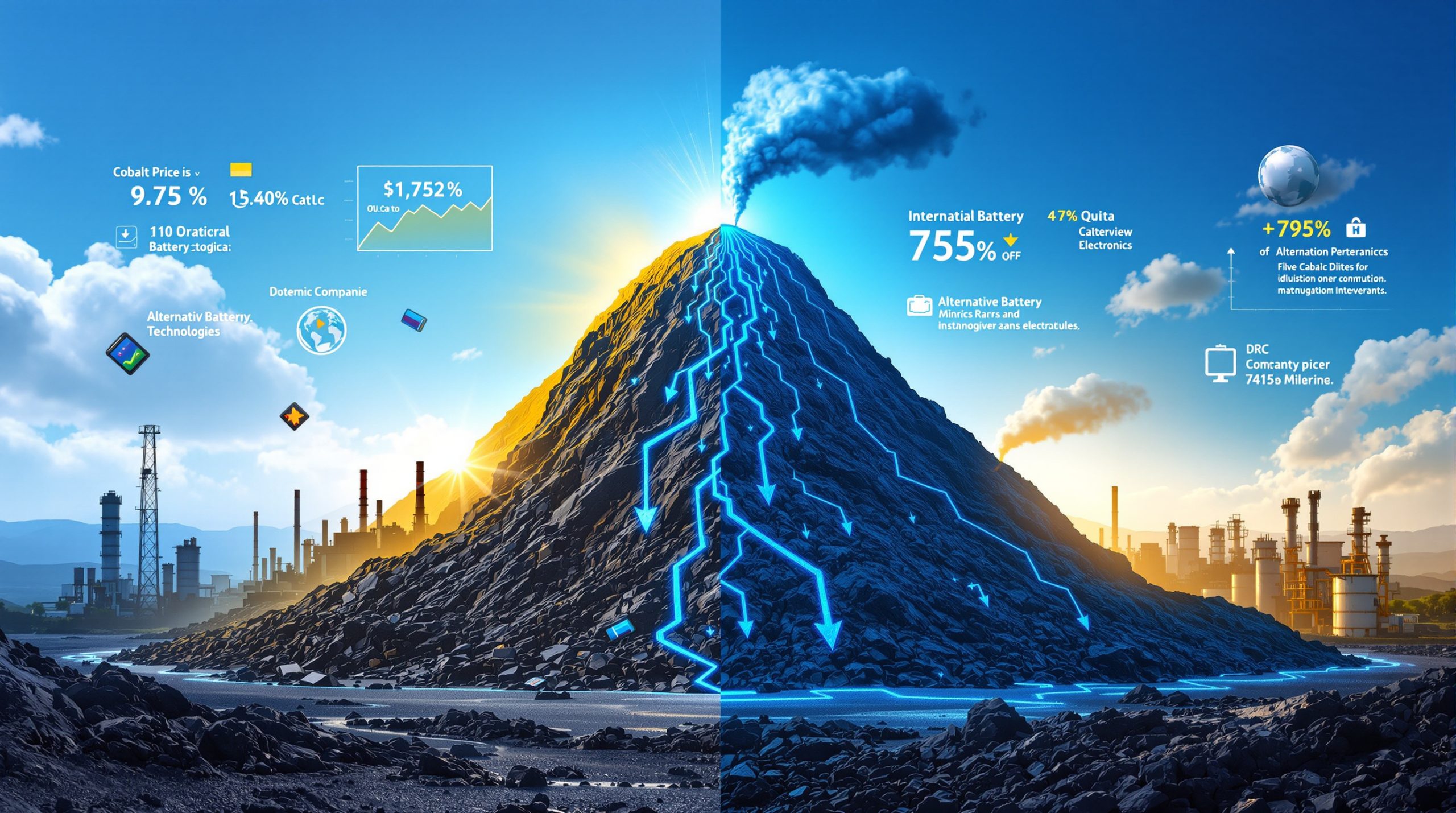US Critical Minerals List Expansion: Strategic Security or Trade Tactic?
The United States has significantly expanded its critical minerals list in 2025, growing from 50 to 54 minerals. This strategic update adds six new minerals—copper, silicon, potash, silver, rhenium, and lead—while removing arsenic and tellurium from the previous list. This expansion represents a fundamental shift in how the US government approaches mineral security and trade policy, particularly as global competition for these resources intensifies.
Key Additions to the Critical Minerals List
-
Copper: Despite being a net exporter of copper ore and concentrates, the US has included refined copper due to import dependency concerns
-
Silver: Added based on supply vulnerability scenarios, particularly potential disruption from Mexico
-
Potash: Essential for agricultural fertilizer production
-
Silicon: Critical for semiconductor and solar panel manufacturing
-
Rhenium: Used in high-temperature superalloys for aerospace applications
-
Lead: Added despite borderline qualification in risk assessments
Minerals Removed from the List
-
Tellurium: Domestic production increased after Rio Tinto began recovering tellurium from its Utah copper smelter in 2022
-
Arsenic: Removed as Peru surpassed China as the world's largest producer, reducing supply concentration risk
What Drives US Critical Minerals Policy in 2025?
The expansion of the critical minerals list reflects multiple strategic priorities that extend beyond simple resource management into geopolitical positioning and economic security.
Economic and National Security Imperatives
The USGS has developed a sophisticated methodology to assess mineral criticality, examining over 1,200 potential disruption scenarios across 84 minerals and their impacts on 402 individual US industries. This analysis revealed that minerals-based industries contribute more than $4 trillion to the US economy, highlighting why even single-mineral supply disruptions can cascade through entire industrial sectors.
Most Critical Minerals by Impact Assessment
According to the USGS assessment, the most critical minerals include:
-
Samarium: Essential for guided missiles, space vehicles, and navigation instruments
-
Rare earth elements: Including lutetium and terbium
-
Semiconductor materials: Particularly gallium and germanium
-
Tungsten: Critical for numerous defense and industrial applications
Chinese Export Restrictions as a Catalyst
Many of these highly critical minerals face Chinese export restrictions, as Beijing leverages its dominant supply position in response to US-China trade impacts. This dynamic has accelerated US efforts to secure alternative supply chains and develop domestic production capabilities.
How Does the Critical Minerals List Connect to Trade Policy?
The expanded critical minerals list arrives amid escalating trade tensions and tariff implementations, raising questions about its potential use as a trade policy instrument.
Recent Tariff Implementations
The administration has already implemented steep import tariffs on several metals in 2025:
-
50% tariffs on aluminum imports
-
50% tariffs on steel imports
-
Targeted tariffs on refined copper (with implementation deferred)
Market Responses to Tariff Threats
The mere threat of refined copper tariffs triggered a significant market response, with mass relocation of metal to the United States. However, other industrial metals on the critical list—including nickel, tin, zinc, and potentially lead—have not yet seen similar tariff market impact.
Investment Metals at Risk
Hybrid industrial-investment metals like platinum, palladium, and silver appear underpriced for tariff risk according to market analysts. Current US premiums for these metals remain at only 2-3% relative to non-US pricing—remarkably low compared to the 50% tariffs applied to steel, aluminum, and copper products.
What Are the Strategic Implications for Global Mineral Markets?
The expansion of the US critical minerals list signals potential shifts in global mineral trade patterns and investment priorities.
The Double-Edged Sword of Import Dependency
The US faces two distinct threats regarding critical minerals energy security:
-
Supply restriction: Dominant producer countries can limit exports to the US
-
Market flooding: These same countries can oversupply markets to undermine domestic US production
This complex dynamic requires nuanced policy responses that balance import restrictions with domestic production incentives.
Tailored Approaches vs. Blanket Tariffs
The administration's approach to tariffs has varied by commodity:
-
Blanket approach: 50% tariffs on aluminum and steel across all countries and product categories
-
Nuanced approach: More targeted measures for copper, with potential phase-in from 2027
The diverse nature of the 54 minerals now classified as critical suggests that tailored, mineral-specific policies may be more effective than one-size-fits-all tariff regimes.
How Will the Critical Minerals List Impact Domestic Production?
The expanded critical minerals list creates both opportunities and challenges for developing domestic mineral resources.
Domestic Production Incentives
The critical minerals designation enables:
-
Expedited permitting processes for mining projects
-
Access to federal funding and investment incentives
-
Priority status for infrastructure development
-
Research and development support for processing technologies
Balancing Restriction and Availability
The administration faces a delicate balancing act between:
-
Using tariffs to protect and stimulate domestic production
-
Ensuring adequate supply of critical minerals for US manufacturers
-
Maintaining competitive pricing for downstream industries
Case Study: Domestic Tellurium Production
The removal of tellurium from the critical list demonstrates how targeted investments in domestic production can reduce import dependency. Rio Tinto's recovery of tellurium from its Utah copper smelter since 2022 significantly decreased US reliance on imports, providing a model for other minerals.
What Does the Section 232 Investigation Mean for Critical Minerals?
In April 2025, the Department of Commerce launched a Section 232 investigation into US critical minerals import dependency, with findings and potential US mineral production order recommendations due in October.
Scope and Timeline of the Investigation
-
Launch date: April 2025
-
Focus: Import dependency across all 54 critical minerals
-
Final report due: October 2025
-
Potential outcomes: Tariffs, quotas, or other trade measures
Precedent from Previous Section 232 Actions
Previous Section 232 investigations have led to significant trade actions:
-
25% tariffs on steel imports (2018)
-
10% tariffs on aluminum imports (2018)
-
Recently increased to 50% for both steel and aluminum (2025)
These precedents suggest that the current investigation could result in substantial trade measures across multiple mineral categories.
How Are Global Markets Responding to US Critical Minerals Policy?
The expansion of the critical minerals list and ongoing Section 232 investigation have created uncertainty in global mineral markets, with varied responses across different commodity segments.
Current Market Pricing of Tariff Risk
According to market analysts, several metals appear to be underpricing potential tariff risk:
| Metal | Current US Premium | Potential Tariff Risk | Market Pricing Adequacy |
|---|---|---|---|
| Palladium | 2-3% | High (Department of Interior releases draft list) | Underpriced |
| Silver | 2-3% | Medium-High (New critical designation) | Underpriced |
| Zinc | Minimal | Medium (Critical designation) | Underpriced |
| Lead | Minimal | Medium (Proposed addition) | Underpriced |
Palladium: A Special Case
The US Commerce Department has launched a separate investigation into potential Russian dumping of unwrought palladium, placing it high on the potential trade action list. This dual pressure—from both the critical minerals designation and anti-dumping concerns—makes palladium particularly vulnerable to trade measures.
What Are the Global Implications of US Critical Minerals Policy?
The expansion of the US critical minerals list has significant implications for international trade relations and global supply chains.
Reshaping Global Supply Chains
US tariffs and trade policies are already driving changes in global mineral supply chains:
-
Relocation of refined metal inventories to the US
-
Increased investment in production outside China
-
Development of processing facilities in "friendly" jurisdictions
-
Formation of strategic mineral alliances among Western nations
International Responses to US Policy
US allies and competitors are developing their own critical minerals strategies in response:
-
European Union: Expanding its own critical raw materials list and developing the Critical Raw Materials Act
-
Australia: Positioning as a reliable supplier through Australia's critical minerals reserve
-
Canada: Aligning with US through the Joint Action Plan on Critical Minerals Collaboration
-
China: Implementing export controls on gallium, germanium, and rare earth processing technologies
FAQs About the US Critical Minerals List
What defines a "critical mineral" under US policy?
A critical mineral is defined as a non-fuel mineral or mineral material essential to economic or national security and which has a supply chain vulnerable to disruption. The designation considers factors including import reliance, concentration of production, and importance to key industries.
Why was copper added to the critical minerals list?
Despite being a net exporter of copper ore and concentrates, the US has significant import dependency for refined copper. This vulnerability in the value chain, combined with copper's essential role in renewable energy infrastructure and defense applications, justified its addition to the list.
How often is the critical minerals list updated?
Under the Energy Act of 2020, the Secretary of the Interior must review and update the list of critical minerals every three years. The 2025 update represents the second major revision since the formal establishment of the list.
Does inclusion on the critical minerals list automatically trigger tariffs?
No, inclusion on the list does not automatically trigger tariffs. However, it does identify minerals that may be subject to trade actions following investigations like the current Section 232 probe into import dependency.
How does the critical minerals list relate to climate and clean energy goals?
Many minerals on the critical list—including copper, lithium, nickel, and rare earths—are essential for clean energy technologies like electric vehicles, wind turbines, and solar panels. The policy aims to secure supplies of these minerals to support climate goals while reducing dependency on potentially unreliable foreign sources.
Want to Invest in the Next Major Mineral Discovery?
Stay ahead of the market with Discovery Alert's proprietary Discovery IQ model, which instantly notifies investors of significant ASX mineral discoveries and translates complex data into actionable insights. Explore why historic discoveries can generate substantial returns by visiting the dedicated discoveries page and begin your 30-day free trial today.




